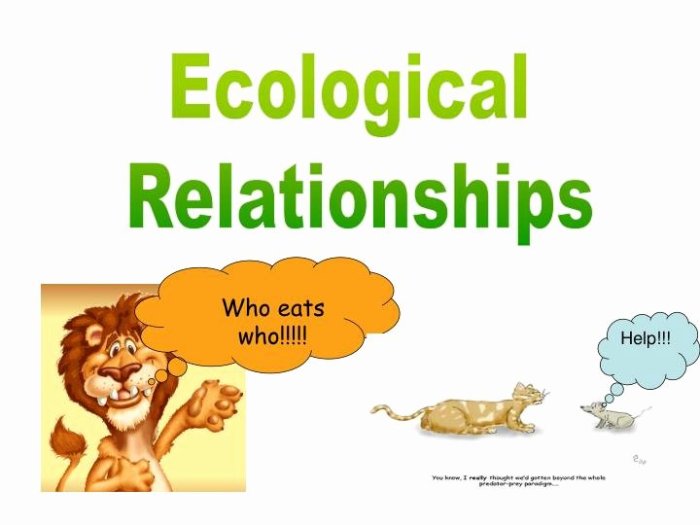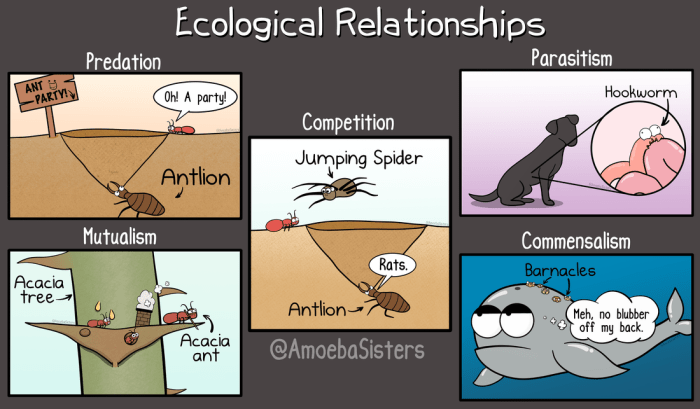Introducing the Ecological Relationships Worksheet Answers Key, a comprehensive guide to understanding the intricate web of interactions that shape ecosystems. This key unlocks the secrets of ecological relationships, empowering students to delve into the fascinating dynamics that govern the natural world.
Within this key, we explore the fundamental concepts of ecological relationships, examining their profound impact on biodiversity and ecosystem stability. From the delicate balance of predator-prey interactions to the mutually beneficial partnerships of mutualism, this resource unravels the complex tapestry of life.
Ecological Relationships: Ecological Relationships Worksheet Answers Key

Ecological relationships refer to the interactions between organisms within an ecosystem. These interactions play a crucial role in shaping the structure and function of ecosystems, influencing the distribution, abundance, and behavior of species.
There are various types of ecological relationships, including:
- Predation:One organism (predator) captures and consumes another organism (prey).
- Competition:Organisms compete for limited resources, such as food, water, or territory.
- Mutualism:Both organisms benefit from the interaction.
- Commensalism:One organism benefits while the other is unaffected.
- Amensalism:One organism is harmed while the other is unaffected.
Ecological relationships are essential for maintaining biodiversity and ecosystem stability. They regulate population sizes, control the spread of diseases, and facilitate nutrient cycling. Understanding these relationships is crucial for conservation efforts and ecosystem management.
FAQ
What is the significance of ecological relationships?
Ecological relationships play a crucial role in maintaining the delicate balance of ecosystems. They regulate population dynamics, facilitate resource allocation, and contribute to the overall stability and resilience of natural communities.
How does the worksheet enhance understanding of ecological relationships?
The worksheet provides a structured approach to exploring ecological relationships. Through interactive exercises and thought-provoking questions, it challenges students to analyze real-world scenarios and apply their knowledge to practical situations.

